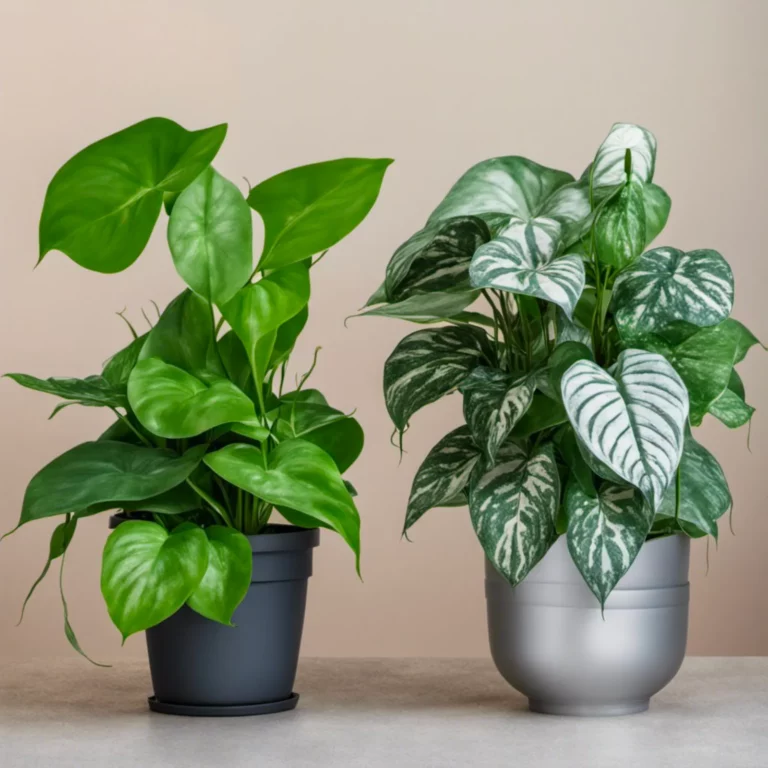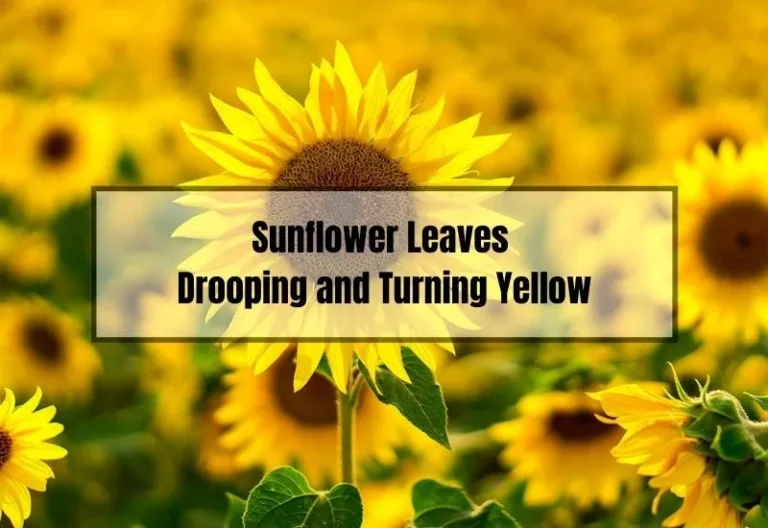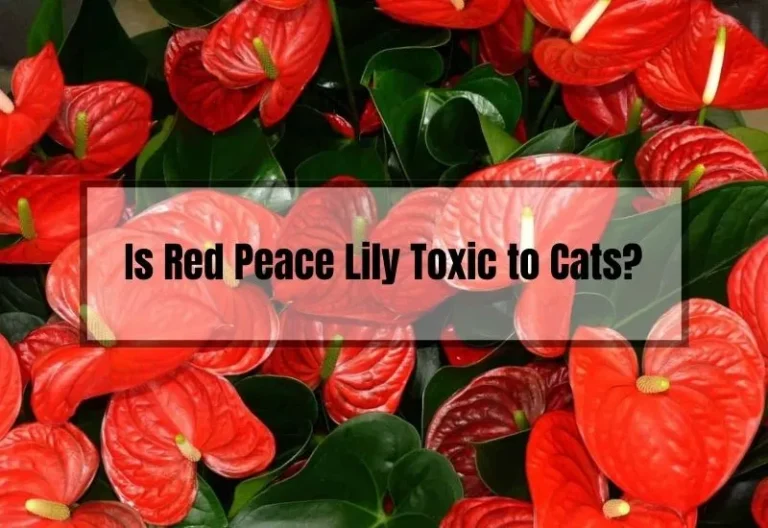The Ultimate Sunflower vs Dandelion Showdown: Which Wins Your Garden?
Have you ever stopped to admire the vibrant and captivating beauty of sunflowers and dandelions? These two plants are true champions of the botanical world, each with their own distinct features and remarkable abilities.
But have you ever wondered how they stack up against each other? Today, I’m excited to take you on a journey of discovery as we explore the similarities and differences between these two fascinating plants. Get ready to be amazed by the wonders of nature!
Key Takeaways
- Sunflowers and dandelions have distinct characteristics that set them apart.
- Sunflowers are tall, majestic plants with large, round flower heads, while dandelions are low-growing plants with smaller, fluffy yellow flowers and toothed leaves.
- Both sunflowers and dandelions have unique qualities that make them interesting to study and appreciate.
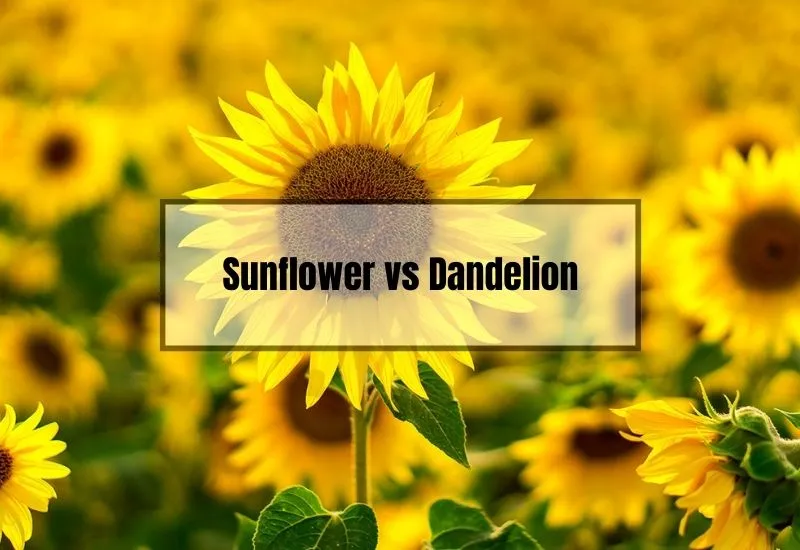
Sunflower vs Dandelion: The Main Differences
Are you trying to decide between planting sunflowers or dandelions in your garden? Both plants have their own unique characteristics and benefits. Let’s take a closer look at the differences between these two plants.
Growth and Cultivation
When it comes to growing sunflowers and dandelions, both plants are fairly low maintenance and can grow in various conditions. Sunflowers are sun-loving plants that thrive in well-draining soil and full sunlight. They can grow up to several feet in height and produce large, vibrant yellow flowers.
Dandelions, on the other hand, tend to be quite low to the ground, usually not growing more than a foot tall. They prefer well-draining soil but can tolerate various soil types and light conditions. Dandelions produce smaller, golden-yellow blooms.
Appearance
Sunflowers and dandelions may share a similar color palette, but their appearance is quite different. As mentioned, sunflowers produce large, vibrant yellow flowers while dandelions produce smaller, golden-yellow blooms. Sunflowers also have smooth leaves and stems, while dandelions have jagged leaves and hairy stems.
Uses
Sunflowers and dandelions have different uses. Sunflowers are often grown for their aesthetic appeal and are used in floral arrangements and as a food source for birds.
Sunflower seeds can also be harvested and eaten as a snack or used for cooking oil. Dandelions, on the other hand, are often considered a nuisance weed. However, they have several medicinal uses and can be used to make teas, tinctures, and other herbal remedies.
Understanding Sunflowers
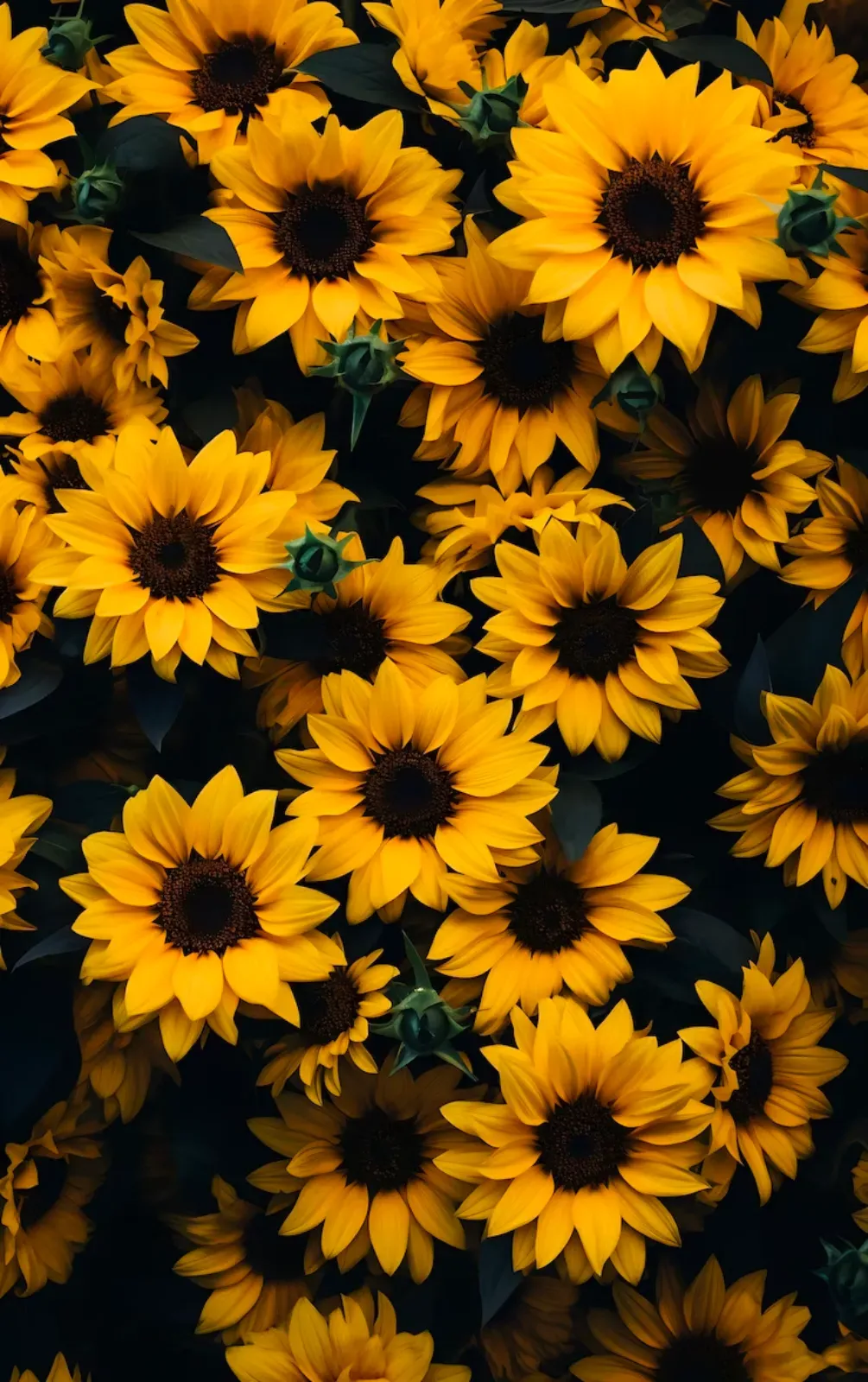
If you’re looking for a bright, cheerful addition to your garden, sunflowers are a great choice. These beautiful flowers are known for their large, yellow blooms and are a popular choice for gardeners all over the world.
In this section, we’ll take a closer look at sunflowers, including their origins, growing conditions, and benefits.
Origins of Sunflowers
Sunflowers are native to North America and were first cultivated by Native Americans around 1000 BC. The flowers were used for food, medicine, and dye, and were also considered sacred by some tribes. When European settlers arrived in North America, they quickly recognized the value of sunflowers and brought them back to Europe.
Today, sunflowers are grown all over the world and are a popular choice for both commercial and home gardens. They come in a variety of sizes and colors, but the most recognizable are the tall, yellow sunflowers that are commonly seen in fields and gardens.
Growing Conditions for Sunflowers
Sunflowers are relatively easy to grow and can thrive in a variety of conditions. They prefer full sun and well-drained soil, but can also tolerate some shade and poor soil. If you’re planning to grow sunflowers in your garden, here are some tips to keep in mind:
- Plant sunflowers in the spring, after the last frost has passed.
- Choose a location that receives at least 6 hours of direct sunlight per day.
- Plant the seeds 1-2 inches deep and 6 inches apart.
- Water the seeds regularly until they germinate, then reduce watering once the plants are established.
- Fertilize the plants with a balanced fertilizer once a month.
Sunflowers can grow quite tall, so make sure to provide them with support if needed. You can use stakes or cages to keep the plants upright.
Benefits of Sunflowers
Sunflowers are not only beautiful, but they also offer a variety of benefits. Here are some of the ways sunflowers can be beneficial:
- Pollinator habitat: Sunflowers attract bees, butterflies, and other pollinators, making them a great addition to any garden.
- Food source: Sunflower seeds are a nutritious snack and can also be used in cooking and baking.
- Oil production: Sunflowers are used to produce oil, which is used in cooking and as a biofuel.
- Soil improvement: Sunflowers have deep roots that can help improve soil quality and reduce erosion.
Overall, sunflowers are a great choice for any garden. They’re easy to grow, beautiful to look at, and offer a variety of benefits. Whether you’re a seasoned gardener or just starting out, sunflowers are definitely worth considering.
Understanding Dandelions
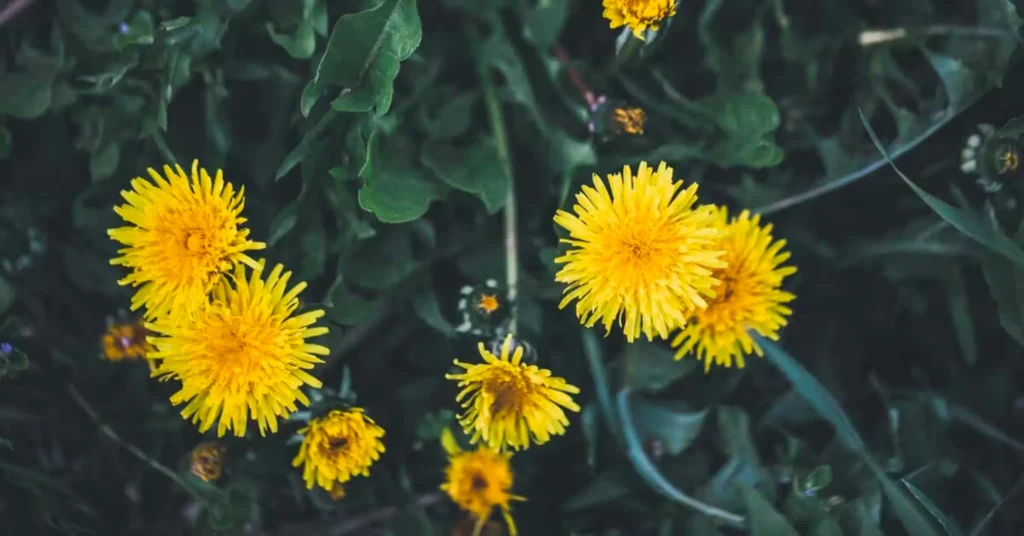
If you’re like most people, you probably think of dandelions as a pesky weed that you need to get rid of in your yard.
However, there’s more to these plants than meets the eye. In this section, we’ll take a closer look at dandelions and explore their origins, growing conditions, and benefits.
Origins of Dandelions
Dandelions are native to Europe and Asia, but they have since spread throughout the world. The name “dandelion” comes from the French phrase “dent de lion,” which means “lion’s tooth.” This name refers to the jagged edges of the plant’s leaves, which resemble the teeth of a lion.
Growing Conditions for Dandelions
Dandelions are hardy plants that can grow in a variety of conditions. They prefer full sun but can also tolerate partial shade. They can grow in almost any type of soil, but they do best in well-drained soil that is rich in nutrients.
Dandelions are also very adaptable when it comes to moisture. They can survive in both wet and dry conditions, although they do best in soil that is consistently moist.
Benefits of Dandelions
Believe it or not, dandelions are actually quite beneficial. Here are just a few of the ways in which they can be helpful:
- Medicinal Properties: Dandelions have been used for centuries as a natural remedy for a variety of ailments. They are rich in vitamins and minerals, and they have been shown to have anti-inflammatory and antioxidant properties.
- Food Source: Dandelions are edible, and they can be used in a variety of dishes. The leaves can be eaten raw or cooked, and the flowers can be used to make dandelion wine or jelly.
- Attract Pollinators: Dandelions are a great source of nectar for bees and other pollinators. By allowing dandelions to grow in your yard, you can help support these important creatures.
Comparing Sunflowers and Dandelions
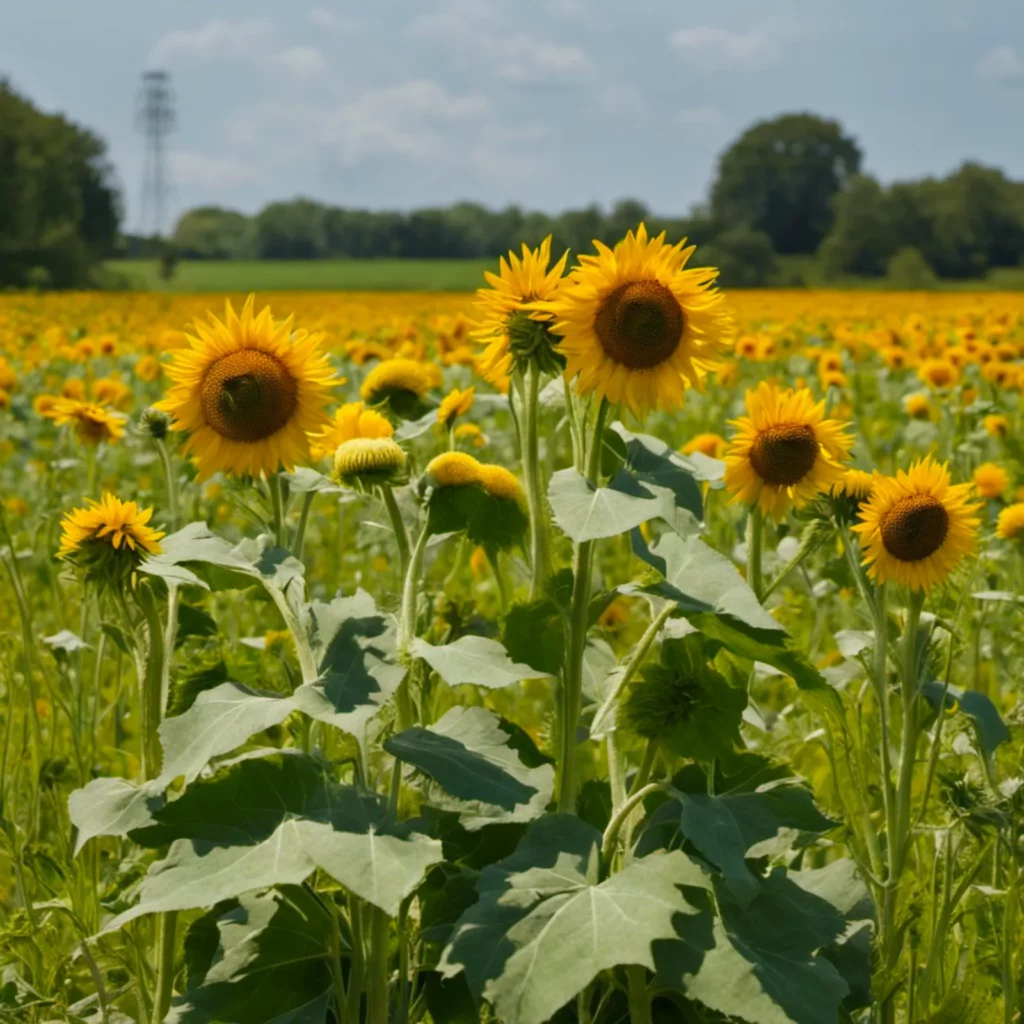
If you are a plant enthusiast, you might be wondering how sunflowers and dandelions compare to each other.
Although they belong to different families, they share some similarities and differences. In this section, we will explore the key aspects that differentiate these two plants.
Appearance
Sunflowers and dandelions have distinct appearances that set them apart. Sunflowers are tall, upright plants that can grow up to several feet in height. They have large, bright yellow flowers that can measure up to a foot in diameter. The flowers have a dark center disk that is surrounded by yellow petals. The leaves of the sunflower are dark green and broad.
Dandelions, on the other hand, are low-growing plants that rarely exceed a foot in height. They have small, yellow flowers that measure less than an inch in diameter. The flowers consist of multiple petals that form a globe-shaped head. The leaves of the dandelion are toothed and can grow up to a foot long.
Growth and Care
Sunflowers and dandelions require different conditions to grow and thrive. Sunflowers prefer full sun exposure and well-drained soil. They are also heavy feeders and require regular fertilization. Sunflowers can grow in different soil types, but they perform best in loamy soil that is rich in organic matter.
Dandelions, on the other hand, are considered weeds by many gardeners. They can grow in different soil types and do not require much care. They can tolerate partial shade and can even grow in compacted soil. However, they can quickly spread and take over a garden if not controlled.
Impact on Ecosystem
Sunflowers and dandelions play different roles in the ecosystem. Sunflowers are known to attract pollinators such as bees and butterflies. They also provide food and shelter for birds and small animals. Sunflowers can also be used as a source of oil, seeds, and other products.
Dandelions, on the other hand, are considered invasive in some regions. They can outcompete other plants and reduce biodiversity. However, they also have some benefits. Dandelions are known to have medicinal properties and can be used to make tea, salads, and other dishes. They are also a source of nectar for bees and other insects.
Practical Uses of Sunflowers and Dandelions
Beyond their aesthetic appeal, both sunflowers and dandelions have practical uses too.
Uses of Sunflower
Sunflowers bring more than just beauty to your garden – they attract pollinators and deter pests. Beyond the garden, they’re used in agriculture for sunflower oil and seeds. Plus, they’ve found their way into our kitchens too. Roasted sunflower seeds make a great snack, and I must say, I’m quite fond of a sunflower seed pesto.
Uses of Dandelion
Dandelions are a wonder in their own right. Every part of the plant – from the root to the leaves, flowers, and even the fluffy seeds – is usable. They’re often used in traditional medicine for their diuretic and anti-inflammatory properties.
Plus, dandelion leaves can add a dash of bitterness to your salads, and if you’re feeling adventurous, dandelion wine is a thing too!
How to Grow and Care for Sunflowers and Dandelions
Both sunflowers and dandelions are relatively easy to grow, but they do have their specific needs.
Growing Sunflowers
Growing sunflowers from seeds is quite straightforward. Choose a spot that gets 6-8 hours of sunlight a day, and has well-draining soil. Sow the seeds about 1 inch deep and water regularly. I can vouch that watching your sunflowers bloom is a rewarding experience.
Growing Dandelions
As for dandelions, well, they don’t need much help! But if you’re specifically cultivating them for their culinary or medicinal uses, make sure they get enough sunlight and water.
Frequently Asked Questions (FAQs)
What are some common uses for sunflowers and dandelions?
Sunflowers are used for their seeds (snacks and oil production), ornamental value, and as a source of food for wildlife. Dandelions are used in culinary applications (salads, sautéed greens, wine, and jelly) and traditional medicine.
Can I grow sunflowers and dandelions in my home garden?
Absolutely! Both plants are relatively easy to grow and maintain. Just make sure to give sunflowers plenty of space and manage dandelion growth to prevent them from becoming invasive.
Are dandelions considered weeds or beneficial plants?
It depends on your perspective. Some people view dandelions as weeds because they can be invasive and difficult to remove from lawns and gardens. Others appreciate their culinary and medicinal uses and consider them beneficial plants.
How do sunflowers and dandelions reproduce?
Both sunflowers and dandelions reproduce through seeds. Sunflower seeds are found in the center of the flower head, while dandelion seeds are attached to the fluffy seed heads that appear after the flowers have bloomed.
Are sunflowers and dandelions edible?
Yes! Sunflower seeds are edible and can be eaten raw, roasted, or used to make sunflower oil. Dandelion leaves and flowers are also edible and can be used in salads, sautéed greens, dandelion wine, and jelly.
Conclusion
There you have it, friends – a detailed comparison of sunflowers and dandelions. These two charming plants may be different in size and stature, but they both hold a special place in our hearts and gardens. Whether you’re team sunflower or team dandelion, it’s hard not to appreciate the unique qualities of these vibrant blooms.
So, why not try your hand at growing these beauties in your own garden? Or, if you’re feeling adventurous, experiment with their culinary and medicinal uses. Embrace the wonder and diversity of sunflowers and dandelions, and let these radiant plants brighten your days and warm your soul. Happy gardening!
Related Posts:


